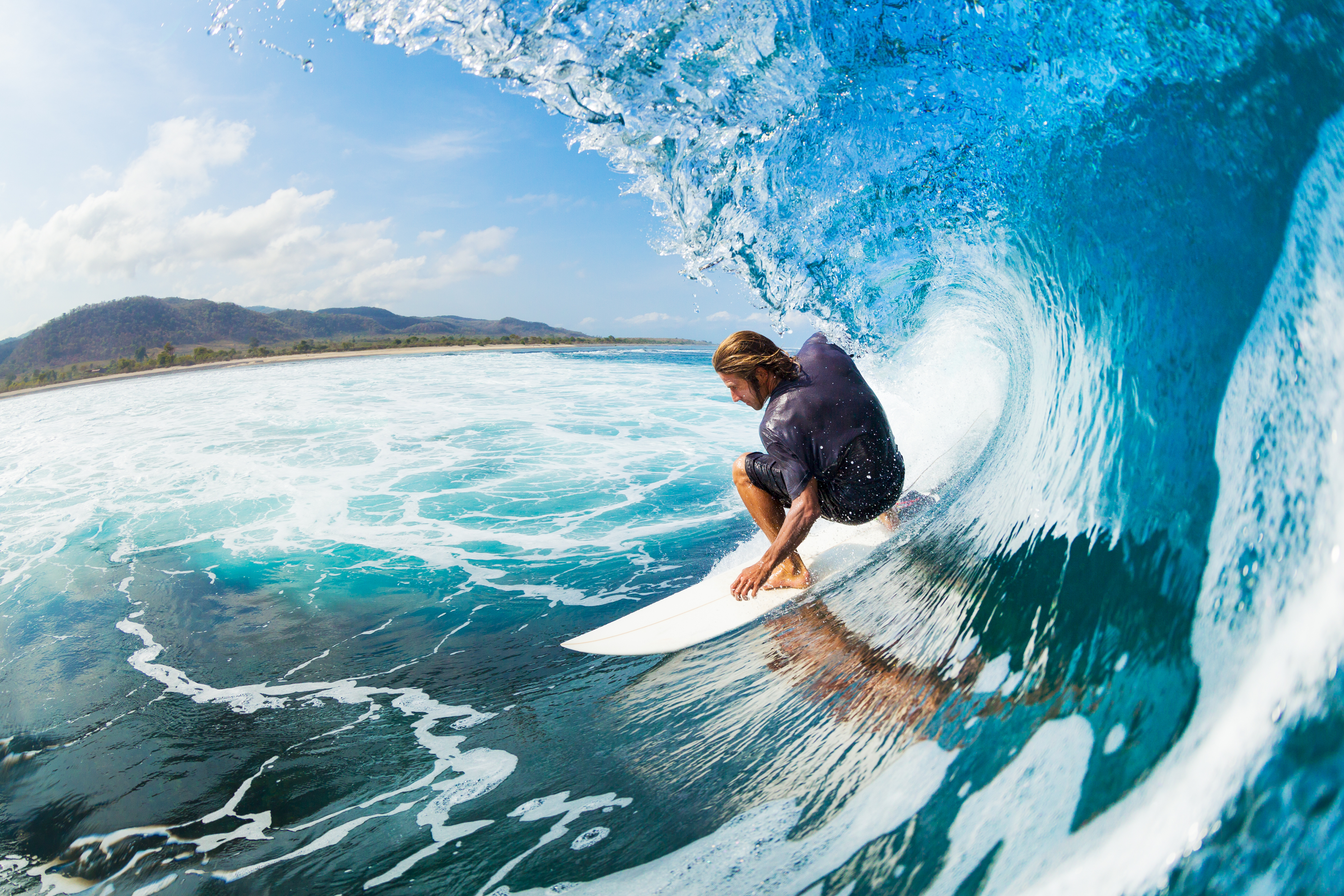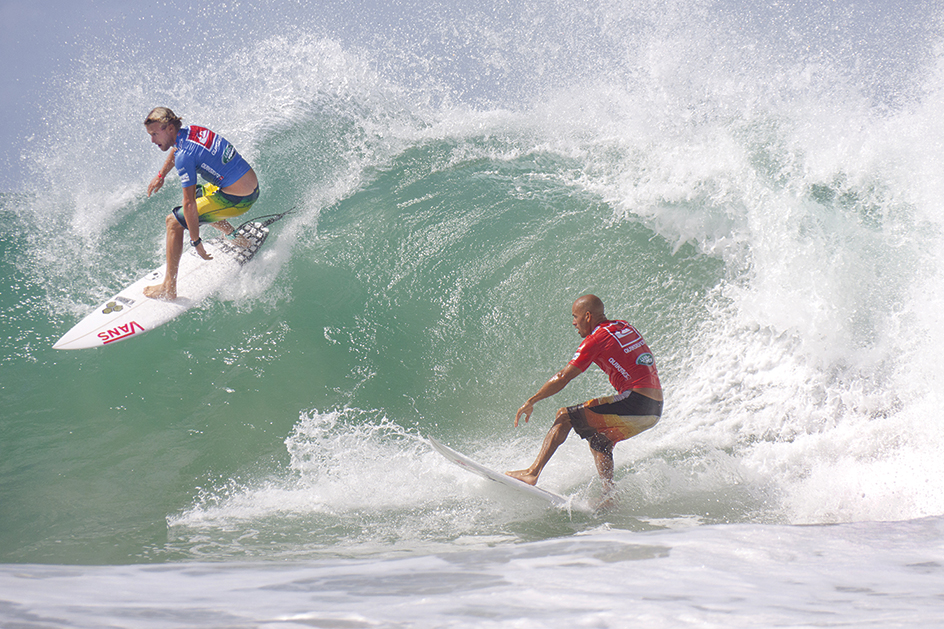Surfing is an exciting water sport in which a person rides waves, usually in the ocean. People in what is now Hawaii were surfing by 1500. Today, surfing is popular in many countries, including Australia, Brazil, France, Indonesia, Japan, Peru, Portugal, South Africa, and the United States.

All forms of surfing require exact timing and sharp reflexes to maintain balance. Surfers should also be able to anticipate what a breaking wave is going to do. There are nine aquatic activities that can be classified as surfing. In surfing, the surfer lies, kneels, sits, or stands on a board or sits in a kayak or canoe. In the three winter surfing events, the surfer maneuvers a surfboard or sailboard on the snow.
This article discusses standup surfing, the most popular form of this sport. It is often simply called surfing.
Ancient Hawaiians surfed on wooden boards that were up to 18 feet (5.5 meters) long. Today, surfers use boards that are made of lightweight polyurethane foam wrapped in fiberglass with resins added to bond and seal.
Loading the player...Surfer
Generally, boards less than 7 feet (2 meters) in length are called shortboards, and those 7 feet or more are called longboards. Shortboards are more popular today. A typical shortboard is about 6 feet (1.8 meters) long, about 20 inches (51 centimeters) wide, and about 21/2 inches (6.4 centimeters) thick. It weighs from 6 to 8 pounds (2.7 to 3.6 kilograms).
To prepare for a shortboard ride, the standup surfer lies facedown on the board. On a longboard, the surfer usually kneels on the board. Then the surfer paddles out beyond where the waves begin to break, called the outside. When a wave, ideally at least 3 feet (0.9 meter) high, starts to move toward the shore, the surfer paddles the board just ahead of it. The surfer stands just as the wave begins to lift the board and carry it toward shore. The surfer shifts weight to steer the board across the wave’s face—that is, the smooth wall of water just below the crest. The surfer may also skim along the wave’s crest.

Modern shortboard surfers tend to stand with one foot over the board’s fin for control and the other foot toward the center of the board to steer it. A fin is a short projection that extends into the water to help the surfer control the board. Skilled surfers may perform such difficult maneuvers as 360’s (complete circular turns on the face of the wave), aerials (flying out of the water above the wave), and roller coasters (riding up and down the face of the wave).

Many surfers train for surfing by running on the beach, bodybuilding, and bodysurfing. To bodysurf, they enter the water and wait until a high wave starts moving toward the shore. Then the bodysurfers do a scissors kick, spreading their legs apart and bringing them together forcefully in the direction of the shore. After swimming a few strokes at the crest, bodysurfers put their head down, arch their back, place their arms along their sides, and keep their body rigid. The wave sweeps them toward the shore in this position. As the wave dies out, bodysurfers push their hands forward and spread their legs to slow down. Bodysurfing provides a sense of balance and a knowledge of waves that is good training for all other aquatic surfing events.
Surfing was included in the Olympic Games for the first time at the 2020 Summer Games, in Tokyo, Japan. The games were actually held in 2021, due to a global outbreak of the disease COVID-19 in 2020.
